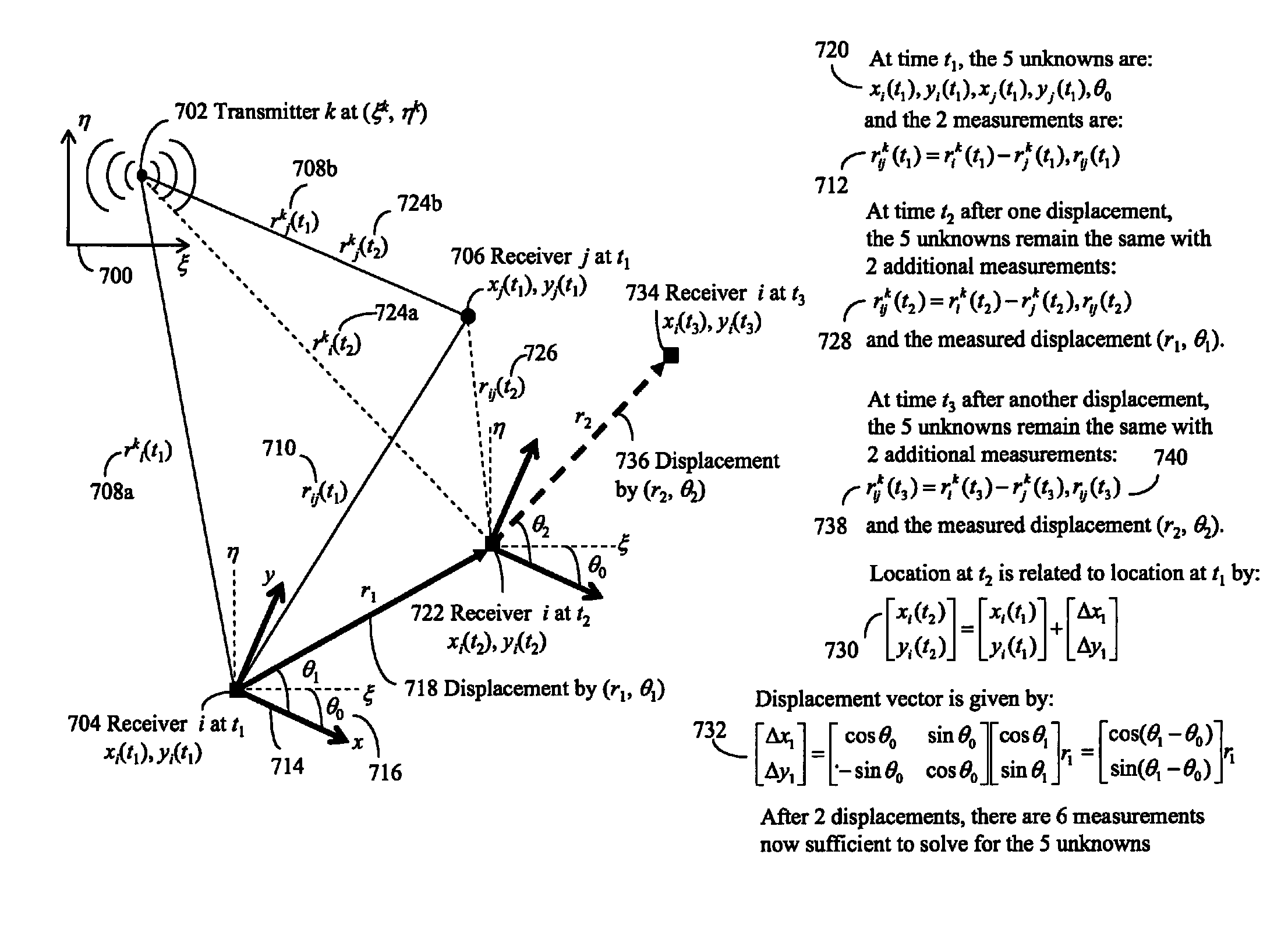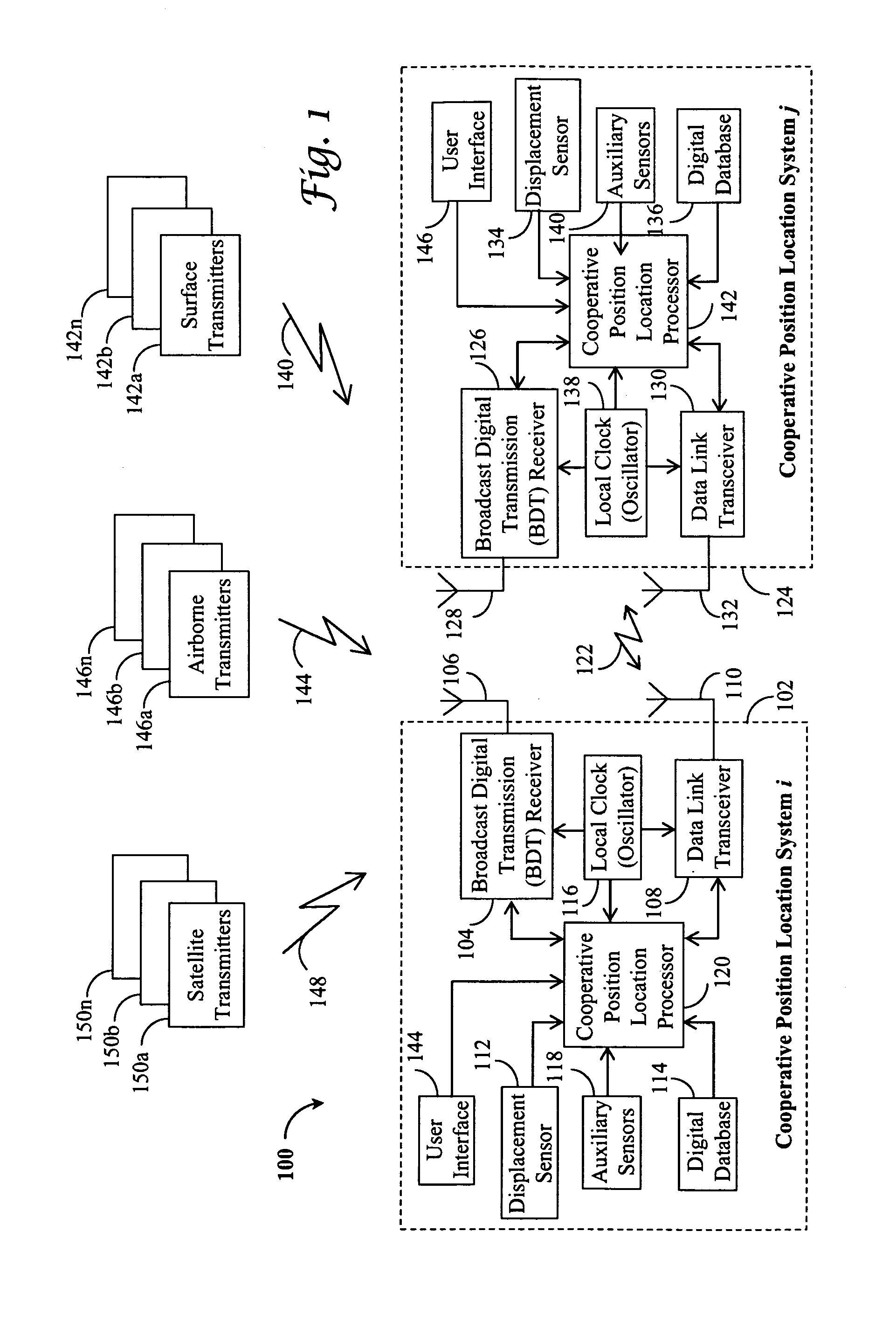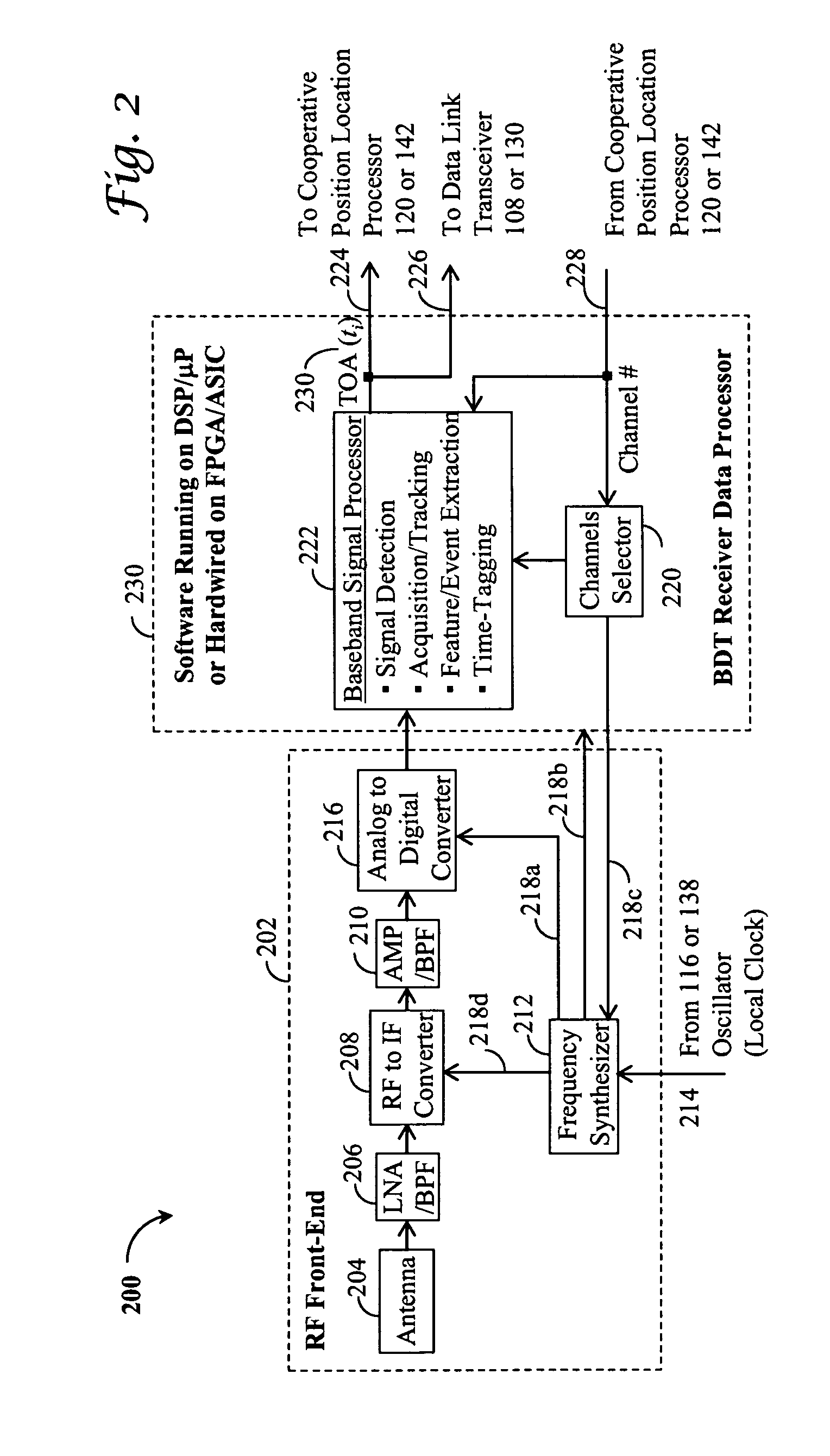Cooperative position location via wireless data link using broadcast digital transmissions
a wireless data link and wireless data technology, applied in the field of radio geolocation, can solve the problems of different clock bias and drift of the timing source at the bdt transmitter, and achieve the effects of convenient adjustment, improved timing, and easy adjustment of broadcast signal characteristics
- Summary
- Abstract
- Description
- Claims
- Application Information
AI Technical Summary
Benefits of technology
Problems solved by technology
Method used
Image
Examples
embodiment 100
[0034]Referring to FIG. 1, an exemplar embodiment 100 of the present invention is sketched wherein two cooperative position location systems i 102 and j 124, respectively, are present. Broadcast digital transmissions 140, 144, and 148 from a plurality of transmitters are received by broadcast digital transmission (BDT) receivers 104 and 126 via antennas 106 and 128, respectively. This may include surface transmitters 142a and 142b through 142n at known locations on the ground for instances. It may also include airborne transmitters 146a and 146b through 146n with their locations either embedded in digital transmissions or made available to cooperative position location systems 102 and 124 by other means. Satellite transmitters 150a and 150b through 150n can also be used in a similar manner. In a sense, GPS satellites fall into this category because a GPS satellite broadcasts its orbit and clock information within navigation messages modulated on the radio signal. More generally, sur...
exemplary embodiment 200
[0037]Referring to FIG. 2, an exemplary embodiment 200 of a broadcast digital transmission (BDT) receiver 104 or 126 is depicted with a radio frequency (RF) front-end 202 coupled to a BDT receiver data processor 230 with software running either on a digital signal processor (DSP) / a microprocessor (μP) or hardwired on a field programmable gate array (FPGA) / an application-specific integrated circuit (ASIC) chip in accordance with the present invention. More specifically, an antenna 204 intercepts RF signals that come from a plurality of transmitters on the ground 140, in the air 144, and / or from the space 148. Captured signals are low-noise amplified (LNA) and bandpass-filtered (BPF) 206 and coupled to a RF to IF converter 208 with mixers. There may be several RF to IF down-conversion stages, each followed by an amplifier (AMP) / a bandpass filter (BPF) 210 in order to reach the desired gain and bandwidth while minimizing unwanted nonlinearity and interference effects. To drive the RF f...
exemplary embodiment 400
[0048]Referring to FIG. 4, an exemplary embodiment 400 of a data link transceiver 108 or 130 is depicted with a data receive channel 402, a data transmit channel 420, and a data link transceiver data processor 440 in accordance with the present invention. The data receive channel 402 comprises an antenna 404, a low-noise amplifier (LNA) and a bandpass-filter (BPF) 406, several RF to IF down-conversion stages 408, each followed by an amplifier (AMP) / a bandpass filter (BPF) 410, and an analog to digital converter (ADC) 412. On the other hand, the data transmit channel 420 consists of a data modulator 430, several IF to RF up-conversion stages 426, each preceded by an amplifier (AMP) / a bandpass filter (BPF) 428, a power amplifier 424, and an antenna 422. To drive the data receive channel 402 and data transmit channel 422, various frequency components 418a and 418b are produced by a frequency synthesizer 416 driven in turn by a crystal oscillator 414 (from 116 or 138). The frequency syn...
PUM
 Login to View More
Login to View More Abstract
Description
Claims
Application Information
 Login to View More
Login to View More - R&D
- Intellectual Property
- Life Sciences
- Materials
- Tech Scout
- Unparalleled Data Quality
- Higher Quality Content
- 60% Fewer Hallucinations
Browse by: Latest US Patents, China's latest patents, Technical Efficacy Thesaurus, Application Domain, Technology Topic, Popular Technical Reports.
© 2025 PatSnap. All rights reserved.Legal|Privacy policy|Modern Slavery Act Transparency Statement|Sitemap|About US| Contact US: help@patsnap.com



